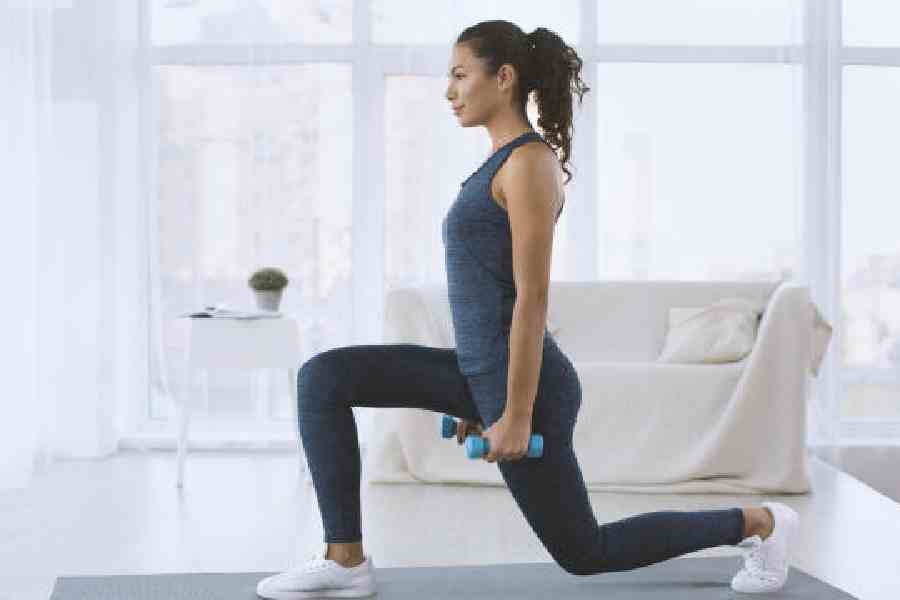When done right, exercise can be a veritable miracle drug. But follow the wrong advice and you can easily set yourself up for injury. Take the situp: once considered the gold standard of core exercises, we now know that it can make low-back pain worse.
Fitness culture is rife with such misconceptions, because of constantly evolving science and fitness influencers who share tips based on “anecdote and gym lore”, said Brad Schoenfeld, a professor of exercise science at Lehman College in New York, US. “Once those opinions are disseminated to the public and take hold, they are hard to change.”
I asked more than a dozen fitness experts to share the myths they hear most often among their clients and patients, and that they wish they could debunk.
Myth 1: Stretch first
If you’ve taken a high school gym class, you’ve probably been told to spend a few minutes stretching before exercising. But recent research has found that stretching before exercising is ineffective for preventing injury and may work against you. That’s because stretching a muscle for more than 90 seconds temporarily diminishes its strength.
“You’ve just transiently weakened all the muscle groups you’re trying to train,” said Dr Josh Goldman, associate director of the Center for Sports Medicine at UCLA Health in the US.
If you really enjoy the feeling of stretching before physical activity, don’t hold the stretch for long, Dr Goldman said.
For the most effective preparation to work out, try a dynamic warm-up — a series of active exercises that get your blood flowing and gently stress your muscles. Save your stretching for a separate time, he said. “I like to tell people to do it before bed,” since it gives your muscles time to recover before moving again.
Myth 2:
Lift heavy weights
Not true, said Schoenfeld, who studies muscle growth. A significant body of research now shows that lifting relatively light weights for, say, 30 repetitions is just as effective at building muscle and strength as lifting weights that feel heavier for five to 12 reps. It’s a matter of personal preference.
But don’t avoid heavy weights for fear that they will make you “bulk up”, said Dr Jacob Sellon, a sports medicine physician at the Mayo Clinic in Rochester in the US. “It actually takes a lot of effort” to build Popeye muscles, he said. “It doesn’t just happen with typical strength training.”
Myth 3:
Running is bad
Research has debunked the notion that running increases your risk of osteoarthritis, and even suggests it can protect your knees against the condition. In fact, not moving increases your risk of developing osteoarthritis, along with age, weight and genetics.
For years, experts thought that “our knees were like tyres — you drive the car a lot, you burn through your tyre tread,” Dr Goldman said. “That is not true, because our body is dynamic,” and our joints can regenerate themselves, especially when we are regularly active.
But running can definitely lead to knee pain or injury if you train too aggressively, said Dr Jordan Metzl, a sports medicine physician at the Hospital for Special Surgery in New York, US. Metzl called this “violating the rule of toos” — running too fast or too far too soon. “Increase slowly,” he said. And if you start to feel knee pain, get it checked out as soon as possible by a sports medicine expert.
Myth 4:
Walking is enough
Walking is popular among older Americans for good reason: it has been shown to lower the risk of heart disease, diabetes and certain cancers, as well as the risk of premature death. And it’s so doable.
But walking on its own is not enough to stay fit as you get older, said Anne Brady, an associate professor of exercise science at the University of North Carolina-Greensboro in the US. Starting in your 30s, your muscle mass progressively declines, she explained, so you also need to focus on strength training.
“People can do daily activities with a minimal amount of cardiovascular fitness,” she said. “But when they don’t have the strength or the muscle power to do daily activities, that’s when they lose their independence.”
Complement walks with at least two 20-minute strength-training sessions every week.
Myth 5:
10,000 steps a day
Nope. Exercise scientists debunked this one years ago.
The myth traces back to the 1960s, when a Japanese clock manufacturer mass-produced a pedometer with a name that translated to “10,000-steps meter”. “Unfortunately, it’s taken on a life of its own, because the research clearly doesn’t support there being anything magical about that goal,” said Cedric Bryant,
president and chief science officer of the American Council on Exercise.
The latest research suggests that the health benefits of walking appear to plateau at around 7,500 steps, but even as few as 4,000 steps per day can reduce the risk of dying from any cause.
NYTNS










